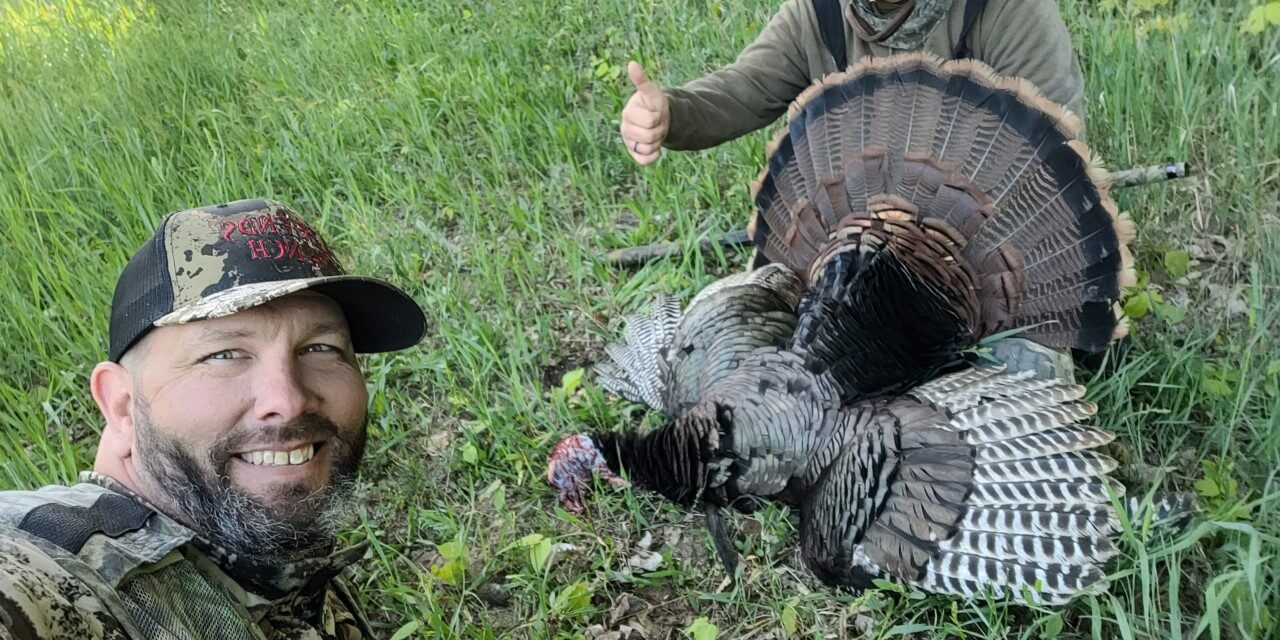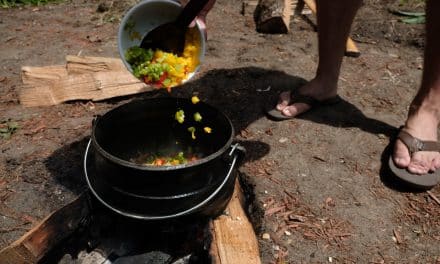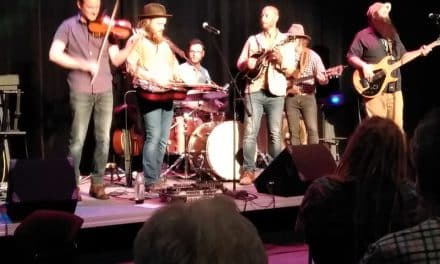Punch your tag & bring home Thanksgiving dinner!
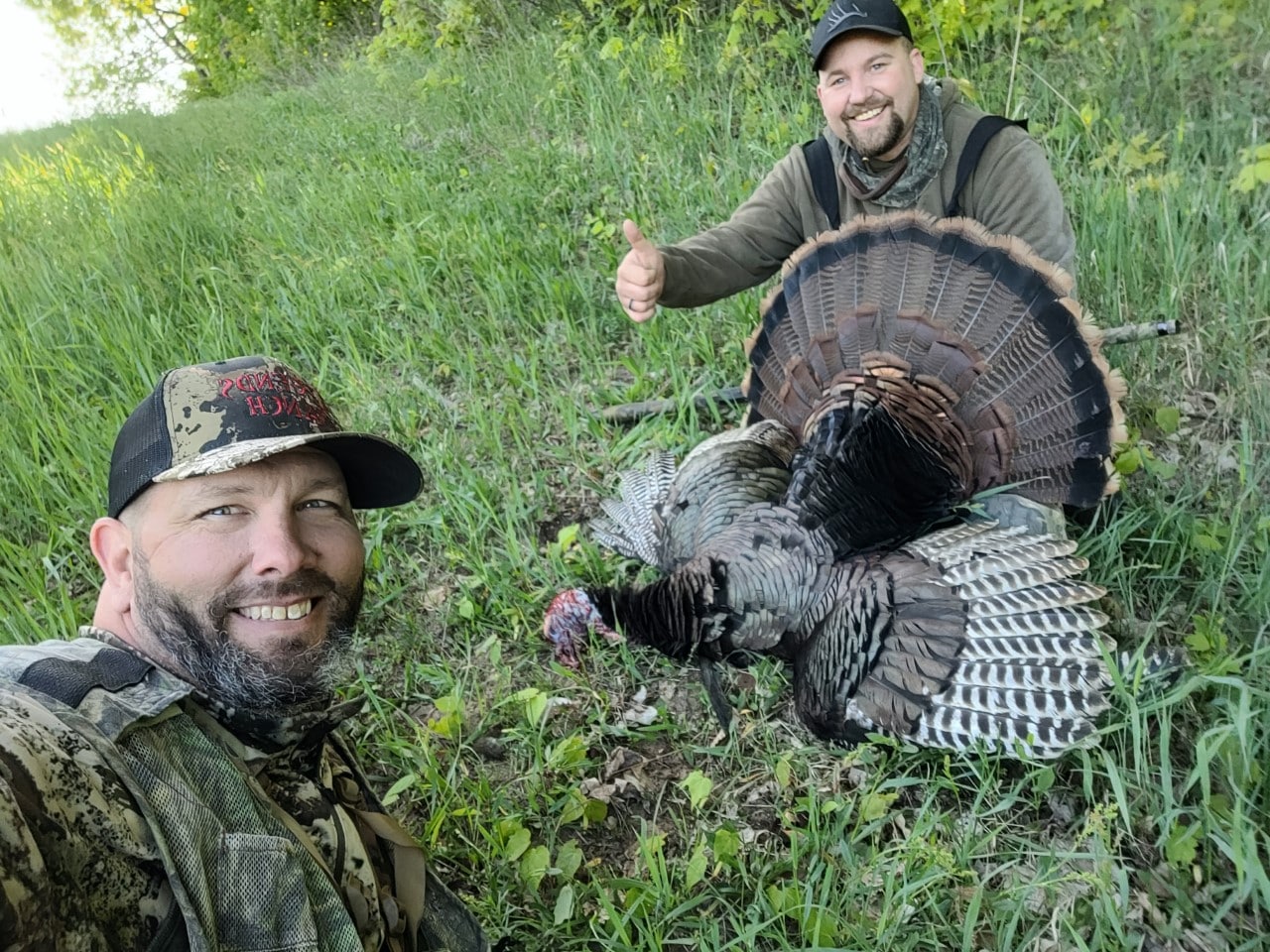
While the average weight of a fall turkey is below 15 pounds, a bird of that size will consume roughly five pounds of food each week. That doesn’t sound like much but fall turkey flocks’ balloon in size this time of year. On the small side, a flock of just a dozen birds will vacuum up 60 pounds of food each week before winter, and they don’t take kindly to rival birds homing in on their calories. This territoriality is what makes fall turkeys susceptible to certain hunting tactics, and what makes the pursuit so fun. (TheMeatEater).
I had the pleasure of meeting up with Josh Frantz, National Wildlife Turkey Federation (NWTF) Local White River Longbeards Chapter to ask his expert advice on scouting, scattering, and tagging fall turkeys! Josh and his chapter have been very well known in the Newaygo County area for years! Some highlights are for their charity work ranging from hosting Jake’s Events for local youth at their homes, scholarship opportunities for students, and supporting Legends Ranch and their Purple Heart Veteran Hunts. They also host a wonderful spring banquet every year!
I asked Josh for some advice if I was to Turkey Hunt this fall. Here is what he had to share…
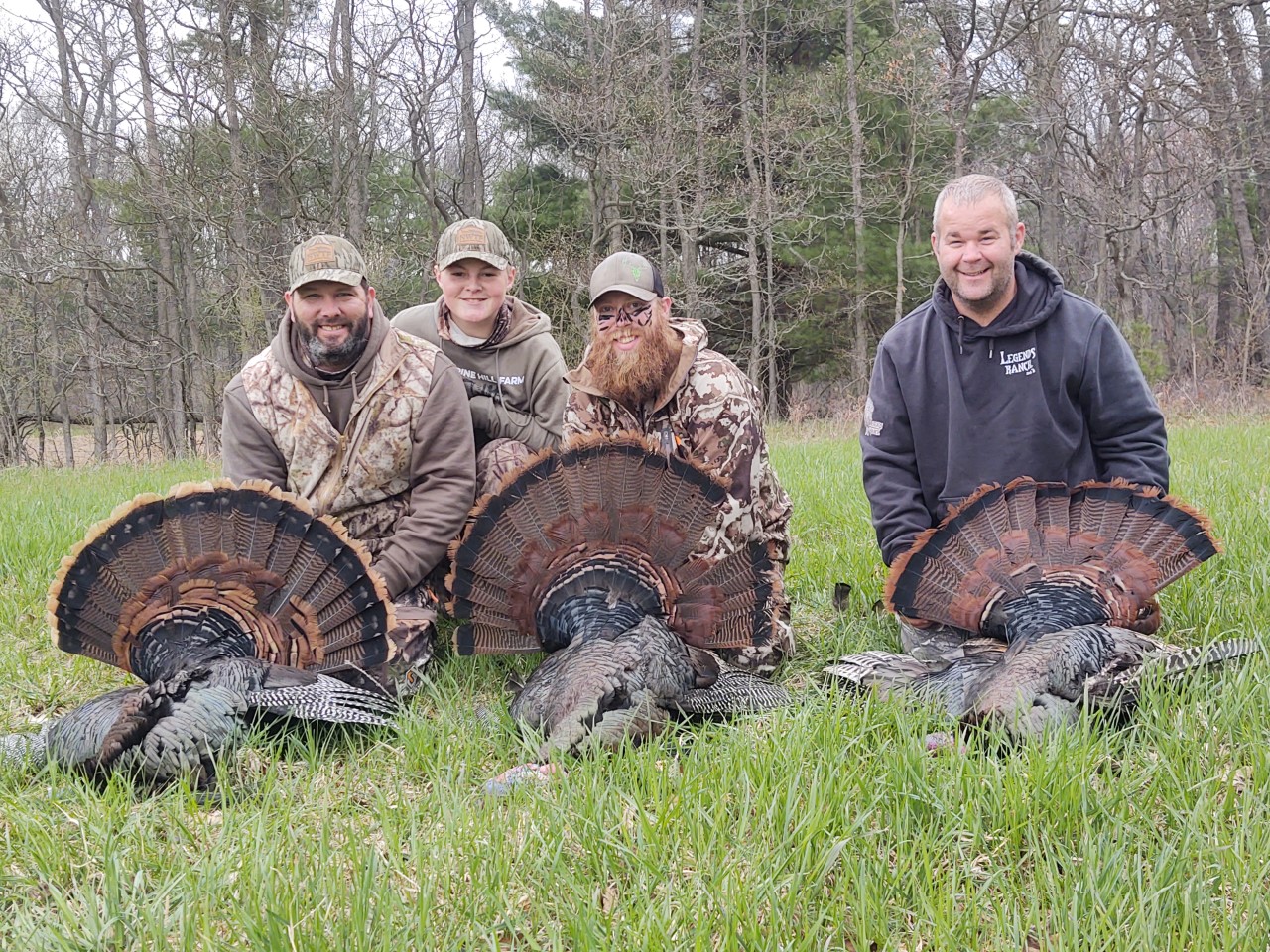
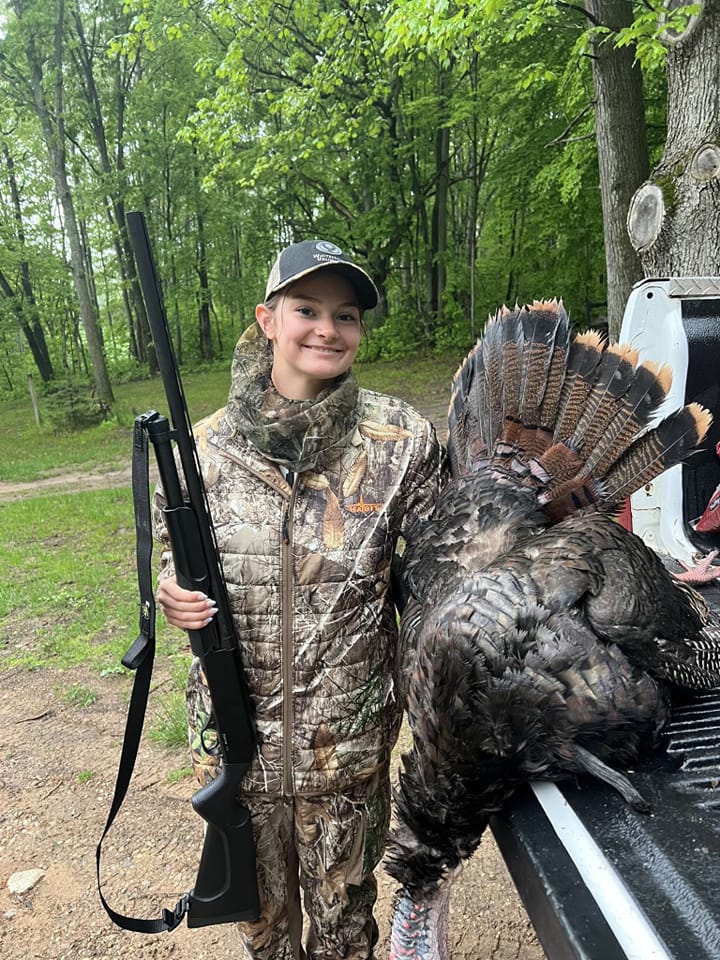
- Less calling is more?
Yes, less calling is more. You do not want to educate the birds and give up your location.
- Tell us how you go about scouting your roosting location.
Before our hunt I will drive around and scout birds, I will also get out and walk and listen because turkeys interact with other sounds and will sound off and give up their location. Usually when turkeys come off the roost they go for water because they need to drink.
- Do not call out of your hunting location until you are hunting?
Anytime you decide to call make sure you are hunting because all you are going to do is educate the birds where you’re hunting. Turkeys are not the smartest birds until you are in the woods with them… then they become very smart very fast.
- I read we should learn to use 1-3 major calls. What do you prefer?
I personally carry way too many calls; I enjoy mouth calls and slate calls myself. On windy days a Box call works the best. I also use a croco screaming peacock call.
- Tell me what you do with decoys and decoy placement.
Depending on what part of the season you are hunting determines what decoys you may or may not want to use. Early in the season I like to use a Jake decoy as season goes on, I like to use a hen lay down with a strutting tom. Always keep your decoys within shooting range.
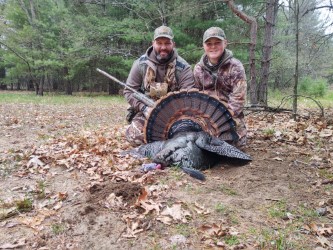
- Don’t move!!! Turkeys have amazing eyesight and can spot things from a long way away. Use some sort of concealment blind or brush pile to hide behind.
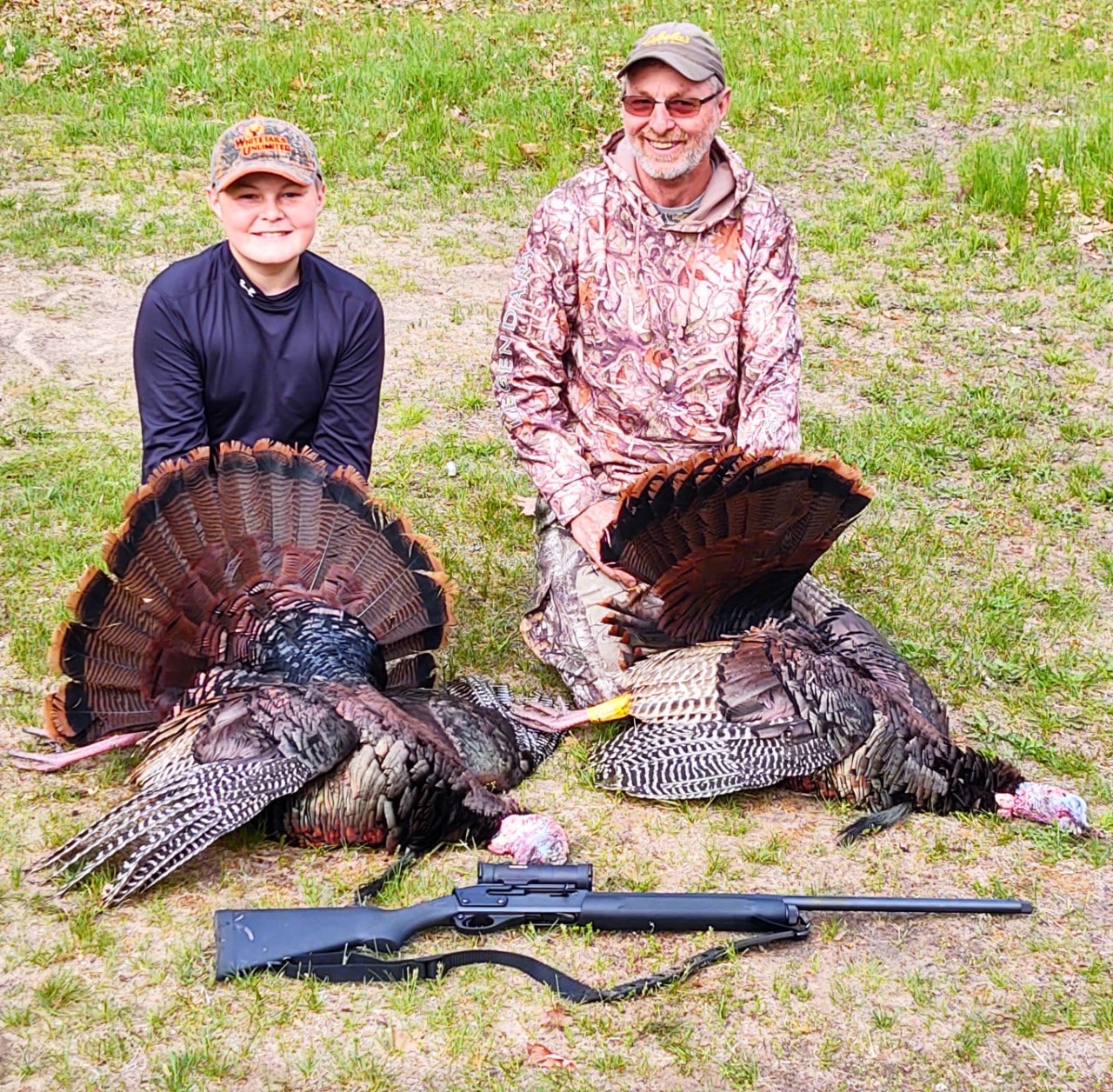
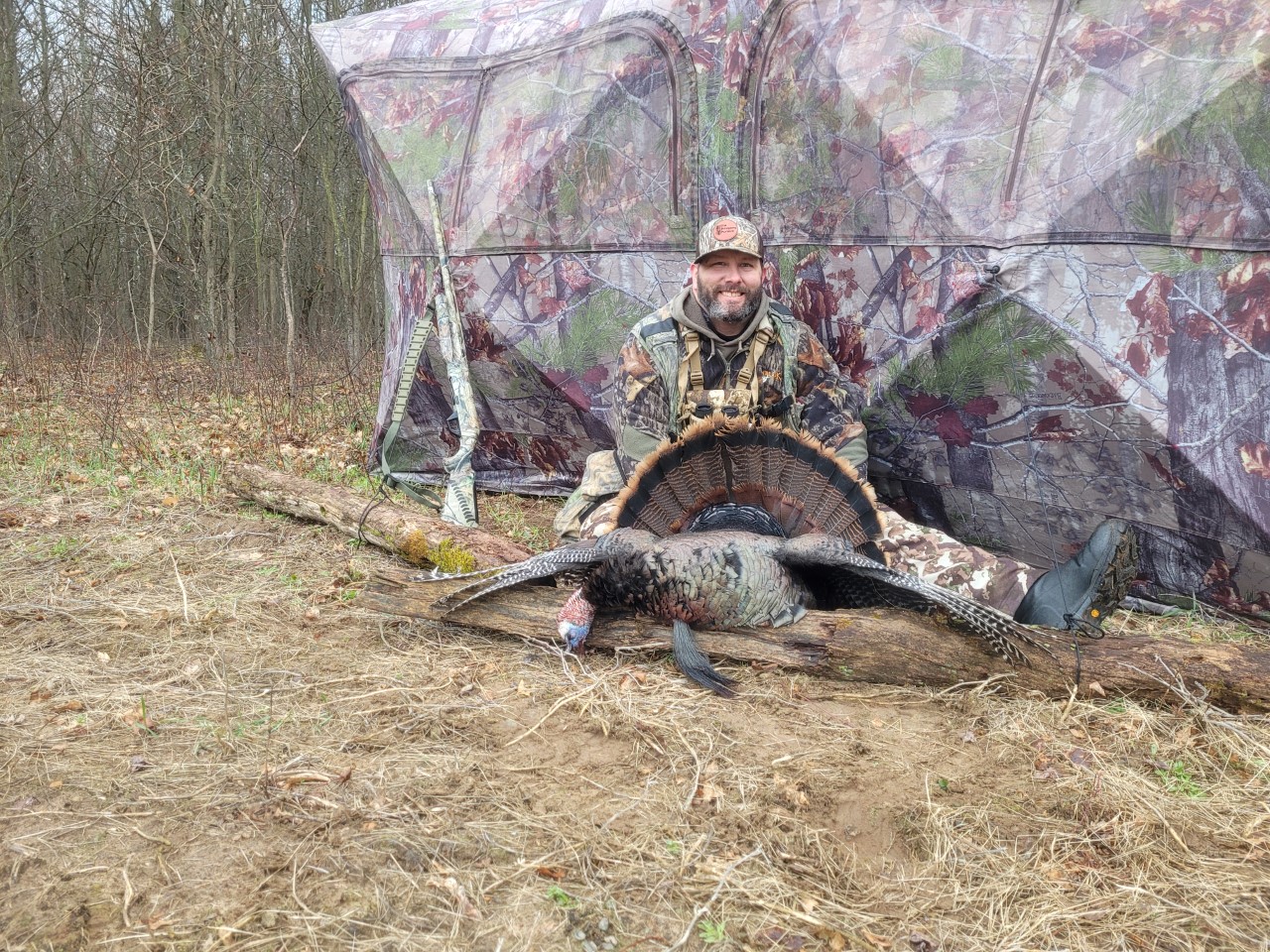
- Give it time!!!
As your hunt goes on and the birds stop talking, you should stop calling, but don’t move… sit tight for at least one hour as there’s a good chance the birds are going to circle you because their curiosity is to find that lone hen. I have had a lot of success sitting silent after I have called some series.
- Hunting hills or hunting flat land?
Benefits to hunting flatland you can see a lot better, I also like hunting hills and it also enriches because it gives you time to move on the birds without being seen, but you always must be ready for them to pop over the other side.
Our programs focus on wild turkeys, deer, and other wildlife and the protection and enhancement of our unique habitat & hunting /shooting heritage.
The NWTF works at the national and state levels, but most of our work is done right here in Newaygo County. We hope to sustain and improve wildlife habitat and the future of our hunting/shooting heritage. All Michigan Chapters complete a tremendous amount of habitat work on state land projects using a 17 to 1 match dollar grant system.
To learn more about NWTF White River Longbeards for Newaygo County, visit their Facebook page:
NWTF White River Long beard’s
*Season information Turkey (michigan.gov)
FALL TURKEY Application Period Jul. 1 – Aug. 1, 2022
Drawing results available online: Aug. 15, 2022
Fall turkey season dates: Sep. 15 through Nov. 14, 2022
Fall turkey hunting licenses From July 1 – Aug. 1, you can apply for one limited-quota license valid for a specific fall turkey hunt unit during specific season dates. You must be at least 10 years of age or have a mentored youth hunting license to apply. If successful in the draw, you can then purchase your fall turkey hunting license.
After the drawing, beginning Aug. 22 at 10 a.m. Eastern Standard Time (EST), unsuccessful applicants can purchase a license for another hunt period, with leftover licenses available until quotas are met. Depending on how many hunters apply, leftover licenses may or may not be available for some hunt units and/or dates. If you didn’t apply for the drawing, you may purchase a leftover license, if available, beginning Aug. 29 at 10 a.m. EST. See the Leftover Licenses section for more information.

